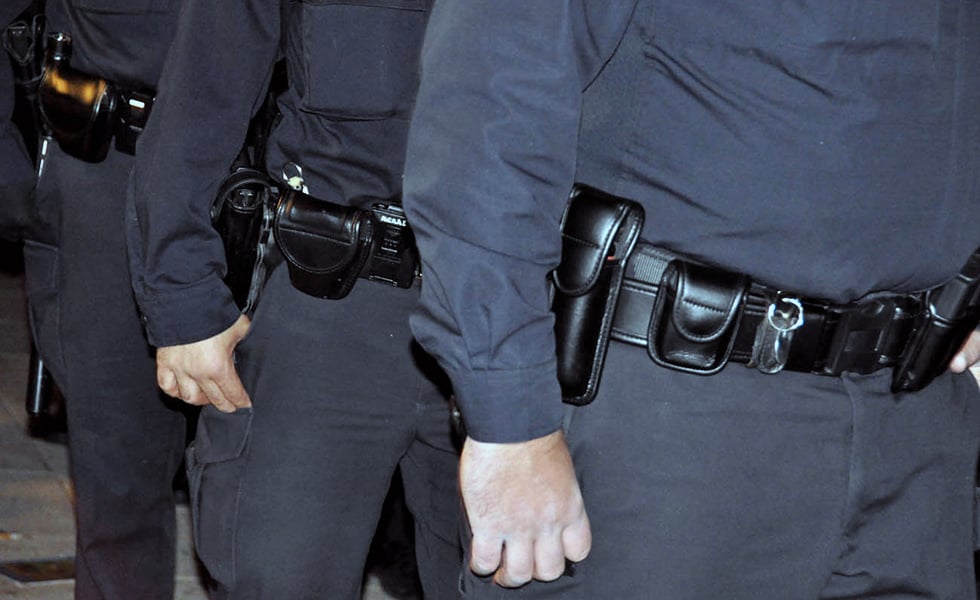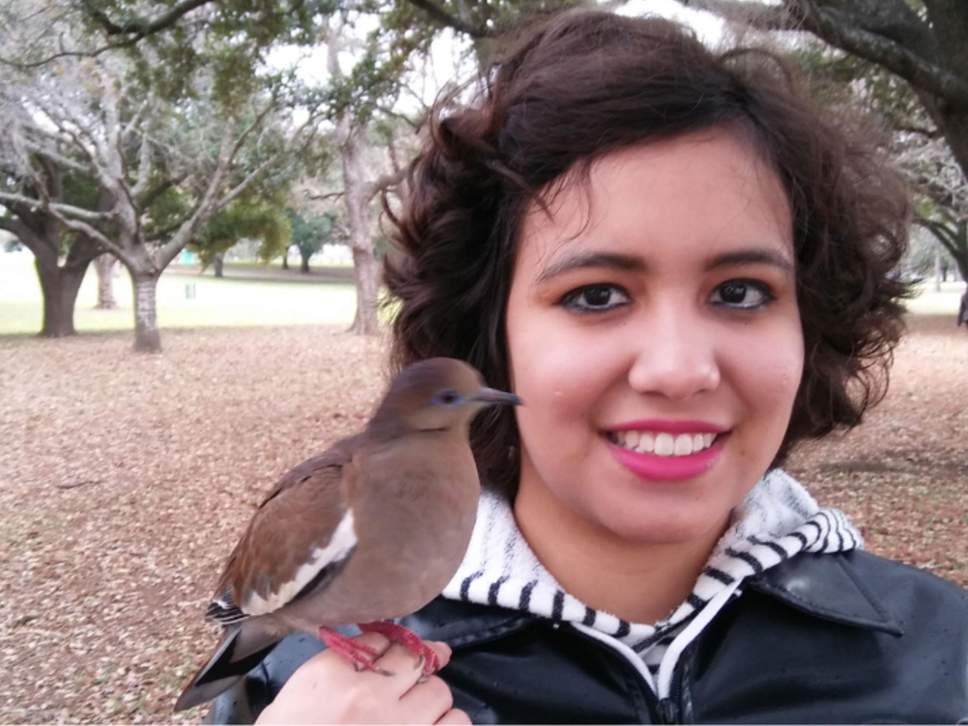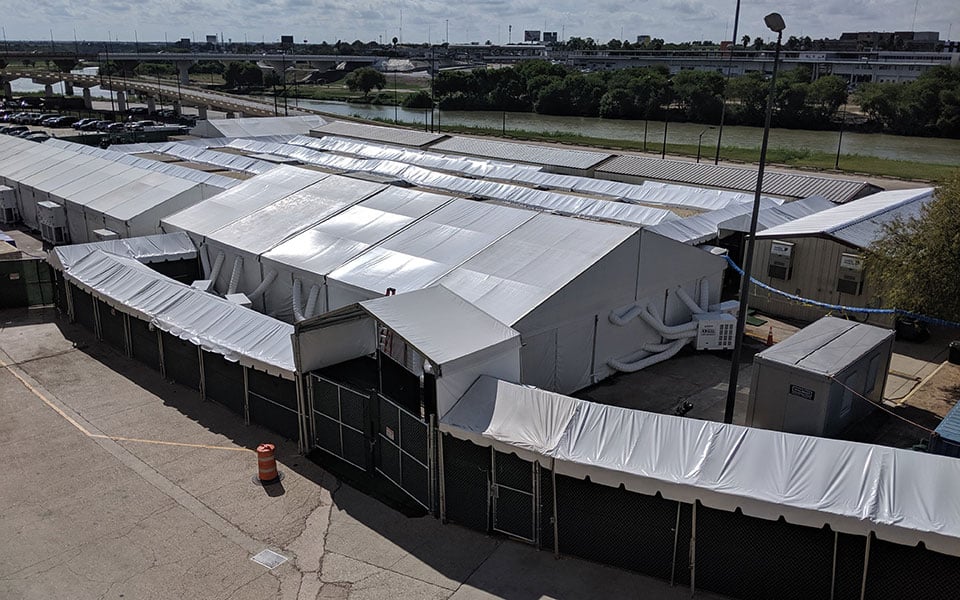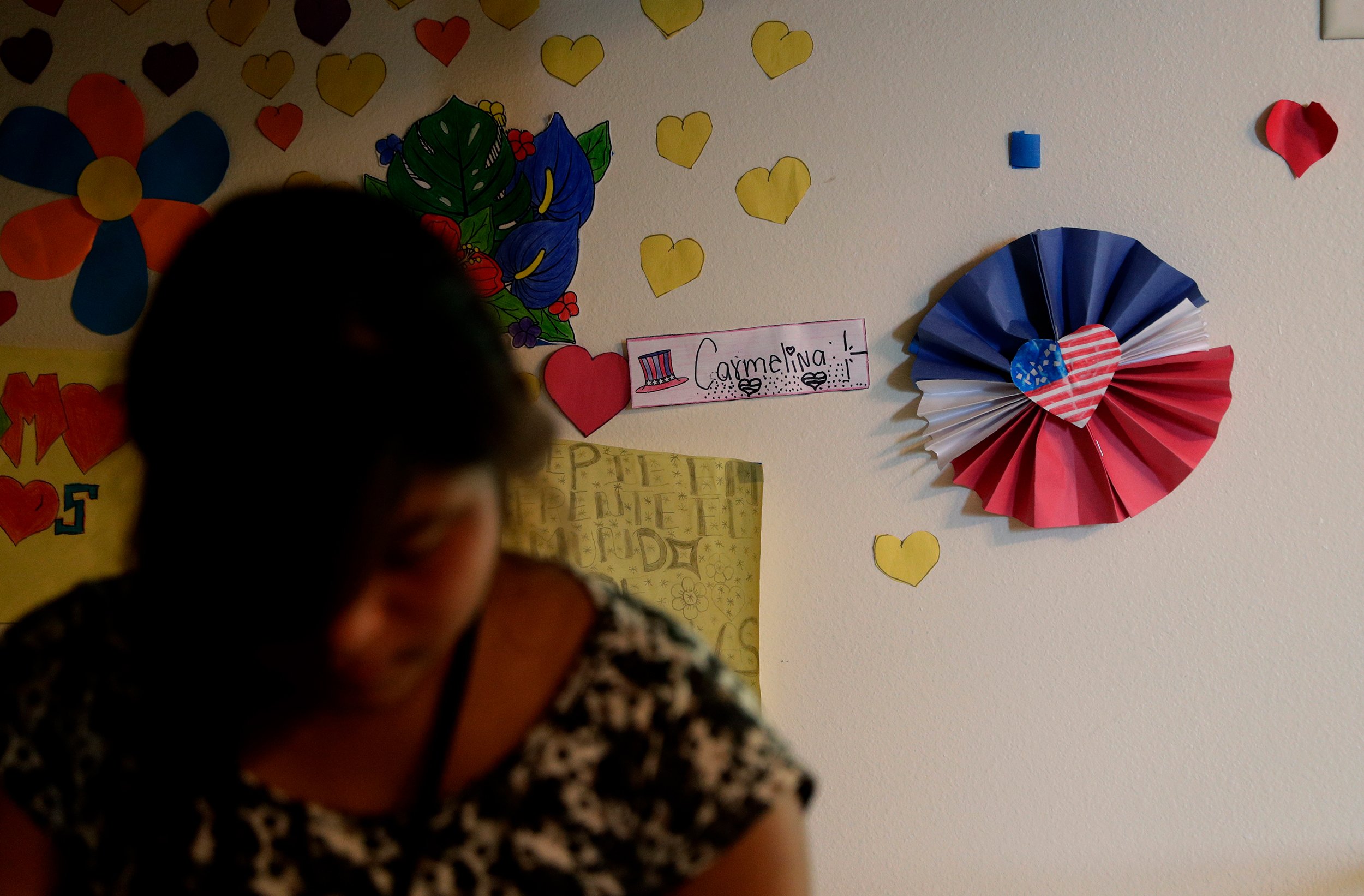
Video: ‘Traumatic, Unnecessary’ Arrest of Austin Woman Shows How Cops Can Worsen Mental Health Crises
Bodycam footage of police arresting a young woman diagnosed with schizophrenia shows how Texas cops turn mental health emergencies into traumatic confrontations—and even deportations.

Above: Despite Austin’s reputation as a progressive beacon, a 2018 city audit found that of the country’s 15 most populous cities, plus Seattle, Austin had the “highest per capita rate of fatal police shootings involving persons believed to be experiencing a mental health crisis.”
Everything was fine, until suddenly it wasn’t.
On the morning of July 19, 2018, Tania Silva was wandering through East Austin, acting oddly. Silva, a 21-year-old community college student diagnosed with schizophrenia, was off her medication. At one point, she reportedly tried to enter some parked cars in a confused attempt to get a ride home. A homeowner in Austin’s Pecan Springs neighborhood saw Silva and invited her into her house. Though delirious, Silva calmed down, and the two talked for nearly an hour; the homeowner placed a 911 call asking for EMS. Instead, three Austin Police Department (APD) officers arrived, and within 20 minutes—bodycam video obtained by the Observer shows—Silva was handcuffed on the ground, screaming, and facing a felony assault charge.
The arrest sparked headlines last year, largely because Silva was undocumented. Once police took her to jail, Immigration and Customs Enforcement (ICE) placed a detainer on her, meaning if she posted bond she’d be transferred to an immigrant detention facility and perhaps be deported to Mexico away from her family in Austin. Travis County Sheriff Sally Hernandez wanted to reject the ICE detainer, but thanks to a provision in 2017’s controversial Senate Bill 4, doing so would have been illegal. For three weeks, Silva languished in county jail, her mental health deteriorating dramatically—until ICE, under pressure from activist groups and Congressman Lloyd Doggett, dropped its detainer, allowing her to bond out without fear of deportation. Silva’s sister, Pamela, told the Observer that after the incident, Silva spent about four months in hospitals, and it took a year for her to recover from the trauma of her experience.
Silva’s felony charge for assault on a public servant was dismissed in February, and in September, APD finally released video of the arrest to the Observer. The video supports the claims of Silva’s family, witnesses, and community activists who claimed that police quickly escalated a calm situation through physical confrontation.
This footage, recorded by the bodycam of APD officer Ryan West, was edited by the Austin Police Department to remove certain confidential information. The Observer has further edited it to address additional privacy concerns raised by the Silva family. Warning: The video may be disturbing to some viewers.
The video reveals a few key things: EMS had arrived just down the block from the scene of the arrest, and was ready to intervene, but APD officer Ryan West sent them away, saying at one point they weren’t necessary “because [Silva’s] not hurt or anything.” West, the mental health officer on the scene, didn’t appear to consider calling Austin’s Mobile Crisis Outreach Team either—a team of medical professionals that works with APD to address situations just like Silva’s, in which an unarmed person is having a mental health crisis. The video shows that Silva sat in the back of a squad car, calm but hallucinating and cradling a small puppy in her arms. In Spanish, she told APD officer Anna Jackson about an imaginary man sitting next to her and also said she was “invincible.” Silva only became agitated when Jackson began demanding she hand over the puppy, which the officers knew was soothing her.
West, who did not understand the Spanish conversation between Jackson and Silva, then said they needed to handcuff Silva in order to take her to a hospital. That’s when things fell apart.
Silva stepped out of the car, Jackson reached for the puppy, and the two other officers, both men, grabbed Silva’s arms—despite knowing, thanks to Silva’s mom who had called earlier that morning to report her missing, that Silva was often afraid of men during her episodes. As West clasped the cuffs on to Silva’s wrists, she panicked and began screaming “why” at a piercing volume; at one point, she flailed out with her left leg, apparently striking Officer Brian O’Quinn. The three officers dogpiled her onto the ground, and as they pinned her against the grass, she began to yell, “it hurts.” She then pinched O’Quinn’s arm. “That’s assault on a police officer, thank you, that’s a felony, thank you,” he said, as Silva began crying out for her mother.

For criminal justice reformers, the incident shows that police need to be cut from the equation of mental health emergency response. “The footage of Tania Silva’s arrest shows a horrifying, yet common example of everything that goes wrong when law enforcement responds to a mental health crisis,” said Cate Graziani, an organizer with the Austin-based nonprofit Grassroots Leadership. Calling the arrest “traumatic and unnecessary,” Graziani said APD should have deferred to EMS or the mobile crisis team, and she noted that the presence of an APD mental health officer—meaning a cop who’s taken training in crisis intervention—seemed to make little difference. “Cops are not health workers,” she said, “and no amount of mental health training can guarantee the safety of individuals in crisis who call 911 for help.”
The incident fueled existing discontent with APD’s handling of mental health crises. Despite Austin’s reputation as a progressive beacon, a 2018 city audit found that of the country’s 15 most populous cities, plus Seattle, Austin had the “highest per capita rate of fatal police shootings involving persons believed to be experiencing a mental health crisis.” In a notorious 2016 incident, then-APD officer Geoffrey Freeman shot and killed 17-year-old David Joseph, who was in crisis and naked at the time.
As shown in the video of Silva’s arrest, the homeowner who had invited Silva into her house approached the cops after they’d cuffed Silva and returned her to a squad car. “An ambulance would have been better, I think,” the homeowner said. “When you guys got here she was was calm. I did not ask for police. … I asked for EMS.” For the better part of an hour, she criticized the officers for calling off EMS, and also claimed she could have calmly gotten the dog from Silva had the officers asked her. “We should all work together, not you guys versus us,” she said.
In response to the homeowner, the officers became indignant: They said other people had called 911 about Silva earlier that morning, and they claimed, on unclear grounds, that Silva would have assaulted EMS. At one point, out of the homeowner’s earshot, O’Quinn said that talking to her was “like talking to a wall.”
“The footage of Tania Silva’s arrest shows a horrifying, yet common example of everything that goes wrong when law enforcement responds to a mental health crisis.”
West also misled the homeowner, telling her that the officers had no choice but to arrest Silva for assault and take her to jail. Later, again out of earshot, he acknowledged that police have discretion when arresting and charging crimes; even after the alleged assault, they could have taken Silva to the hospital.
Earlier this month, Austin City Council approved funding for new mental health clinicians to help field 911 calls and additional paramedics, a spending package that Council says should lead to more mental health crises being handled by EMS and clinicians. But the new reform is no panacea, Graziani warned. “Law enforcement still has to choose to utilize the mental health diversion options the city just expanded, which they failed to do in Tania Silva’s case,” she said. And in a recent blog post, Austin criminal justice reformer Scott Henson noted that protocols still need to be developed and implemented.
As a model, Graziani pointed to a long-standing program in Eugene, Oregon, whereby a nonprofit that contracts with the city handles most mental health calls using unarmed crisis workers and medics—no cops involved. The group handled 17 percent of the city’s 911 calls in 2017, with a budget that’s just over 1 percent of the local police department’s.
In response to a request for comment, an APD spokesperson sent a link to a press conference the department held after Silva’s arrest, which can be viewed here.
Silva’s case was less grave than the many in which mentally ill individuals are shot and killed by police officers, but her immigration status added a nasty wrinkle. Though she avoided deportation, not all are so lucky. Last year, the Observer wrote about Silva and the case of another Central Texas young woman, Janelie Rodriguez, who was undocumented and arrested during a crisis in Buda. Like Silva, Rodriguez was charged with felony assault on an officer and like Silva, those charges were later dropped. But unlike Silva, Rodriguez was deported to Mexico in December, a country she hadn’t lived in since she was 2 years old.
Read more from the Observer:
-
Why a Texas Gun Control Activist is Optimistic About the Chances for Reform: Texas Gun Sense’s Ed Scruggs on how Abbott and Patrick talk about guns behind closed doors—and what that says about the prospects for change.
-
What the UAW Strike Looks Like, From Deep in the Heart of Anti-Union Texas: GM autoworkers from the Arlington plant, one of the company’s most profitable, are part of the largest strike against a U.S. business since 2007.
-
The Green New Deal Can Exist in Texas: The state has already shown what can be accomplished when renewable energy is prioritized. Now, Texans want to take action. Do lawmakers?


